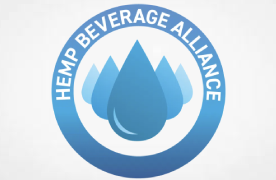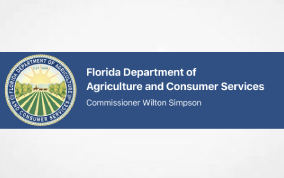The United States Department of Agriculture (USDA) released a final rule regulating hemp cultivation in the US. The final rule (FR) is available in the Federal Register and will be effective on March 22, 2021.
BY DANIEL SHORTT, GREEN LIGHT LAW GROUP —
Previously, the USDA issued an interim final rule (IFR) on hemp in October 2019. Since then, it has twice taken in public comment, seeking input from hemp stakeholders. The hemp industry was openly critical of several of the IFR’s provisions. These concerns are summarized nicely in a joint letter from Senators Ron Wyden and Jeff Merkley (Wyden-Merkley Letter), this article from Natural Products Insider (NPI Article), and these comments from the National Association of State Departments of Agriculture (NASDA Comment).
The USDA has addressed some of the industry’s most pressing concerns, but some of the most unpopular provisions from the IFR remain in the now FR. This article summarizes what the FR did and did not address.
Testing Window. The IFR required that growers test hemp plants for THC levels 15 days prior to harvest. THC is what differentiates hemp from marijuana. The 2018 Farm Bill, and the 2014 Farm Bill before it, required that hemp have no more than 0.3% THC on a dry weight basis. This short testing window was a logistical nightmare for hemp growers. The Wyden-Merkley Letter expressed concern that “15 days is an impossible obstacle for growers to overcome, and does not provide enough time before harvest to test, submit testing, and receive a response . . . to perform the necessary tests.” The FR extends this testing window to 30 days before harvest, giving growers more time to test their hemp crops before harvesting. While pre-harvest testing will still present challenges, this gives hemp growers a little more breathing room and is a welcome change.
Sampling for Testing. In addition to expanding the testing window, the USDA indicated that it revised the FR to allow for more flexibility in the samples used for testing:
[S]takeholders requested that samples may be taken from a greater part of the plant or the entire plant. They also requested sampling from a smaller number of plants. The FR allow states and tribes to adopt a performance-based approach to sampling in their plans. The plan must be submitted to USDA for approval. It may take into consideration state seed certification programs, history of producer compliance and other factors determined by the State or Tribe.
This flexibility in sampling is another welcome change in the FR.
Negligence Violation Standard on Total THC. The IFR created a negligence threshold for violations related to THC testing where a grower would be issued a negligent violation if their crop tested above 0.5% THC. If a grower received more than three negligent violations in five-year period, they would be banned from growing hemp for five years. The NASDA Comment “urge[d] the USDA to set the negligence threshold for THC at 1%.” The USDA did just that. The FR raises the negligence threshold from 0.5% to 1%. If a plant tests at or below this threshold, the producer will not be deemed to have committed a negligent violation.
DEA-Registered Labs. The IFR required that any labs testing hemp for THC be registered with the Drug Enforcement Administration (DEA). The Wyden-Merkley Letter stated that because hemp is an agricultural commodity, not a controlled substance, it “should not be subjected to prohibitive DEA regulations” and that the requirement to test at DEA registered labs would create a bottleneck, causing unnecessary delays because the DEA was not equipped to register enough labs to handle the massive amount of testing required for the growing hemp industry. The Wyden-Merkley Letter suggested removing the requirement. The FR addresses these concerns to some degree but does not go so far as to remove this requirement. Here is how the USDA summarizes DEA lab registration in the FR:
[T]here are an insufficient number of DEA-registered laboratories to test all the anticipated hemp that will be produced in 2020 and possibly 2021. DEA has agreed to extend the enforcement flexibility allowing non-DEA registered labs to test hemp until January 1, 2022 and is processing lab registration applications quickly to get more labs testing hemp DEA-registered.
Disposal and Remediation of Non-Compliant Plants. The IFR gave hemp growers few options for disposing of non-compliant plant material (e.g., any plants that exceed the 0.3% THC threshold). The NASDA Comment summarized why this was a problem:
The [IFR] requires that non-compliant material must be collected for destruction by a person authorized under the Controlled Substances Act to handle marijuana, such as a DEA-registered reverse distributor or duly authorized enforcement officer. This new requirement seems unnecessarily stringent and costly when the primary focus is having expert oversight and thus compliance.
The FR provides alternative disposal methods for non-compliant plants that do not require a DEA reverse distributor or law enforcement. You can find more about these disposal options here. In terms of remediation, the FR requires that any hemp flower with more than 0.3% delta-9 THC be destroyed but the FR “allows remediation activities, either disposing of flower materials and salvaging the remainder of the plant or blending the entire plant into biomass plant material.”
Bottomline. While the FR made some significant changes, it did not address other major concerns. Perhaps the most disappointing piece of the FR is the fact that the USDA will continue to require that hemp must be tested using methods where the “THC concentration level reported accounts for the conversion of delta-9 tetrahydrocannabinol acid (THCA) into THC.” This is referred to as Total THC testing, meaning that both THCA and THC are added to determine whether a plant has more than 0.3% THC. This has been very challenging because many of the hemp genetics available in the United States were developed under the 2014 Farm Bill, which did not require Total THC testing. Adding THCA to the delta-9 THC threshold makes it much harder for hemp growers to come in under the 0.3% THC threshold. That will not change with the FR. However, according to Hemp Industry Daily, about half the states operating hemp production programs are currently operating under the 2014 Farm Bill, which will sunset on January 1, 2022. That gives the hemp industry some breathing room, but also creates uncertainty as there are currently a patchwork of different testing requirements across the country.
The FR is another step in the very complicated process of regulating hemp. The FR is better than the IFR in many ways, but still leaves much to be desired. What remains to be seen is what the Biden administration and the Democrat-controlled Congress will do next. Many of the unpopular provisions of the FR stem from the fact that THC-rich marijuana remains illegal under federal law. As we wrote in the lead up to the Georgia special elections, the Democratic leaders promised to pass legislation to legalize marijuana if they gained control of the Senate. That could have a major impact on the legal landscape for hemp. In addition, advocates like the Agricultural Hemp Solutions, led by Courtney N. Moran, LL.M, are focusing lobbying efforts on legislative fixes to some of the thornier issues with hemp, as we recently discussed in a webinar with Courtney. While we will continue to monitor for federal developments, keep in mind that the FR will go into effect in March of this year.
Source: http://portlandmarijuanaattorneys.com/2021/01/20/usda-hemp-rule/
















